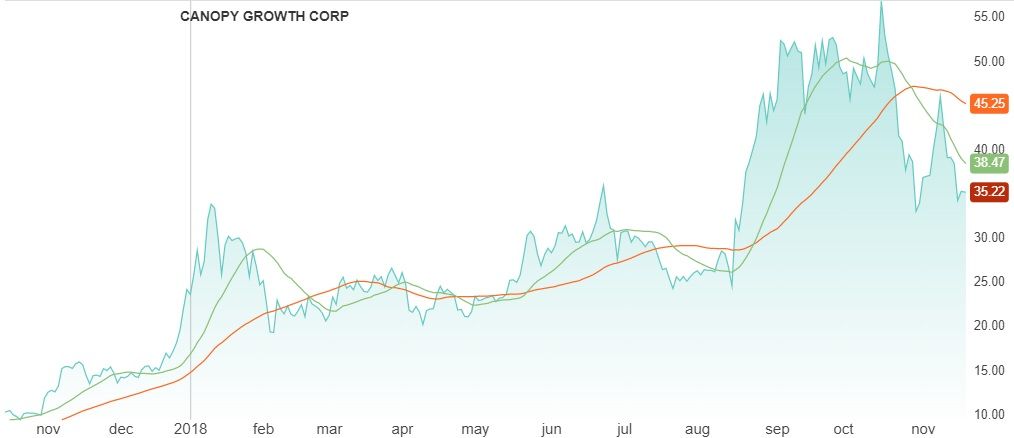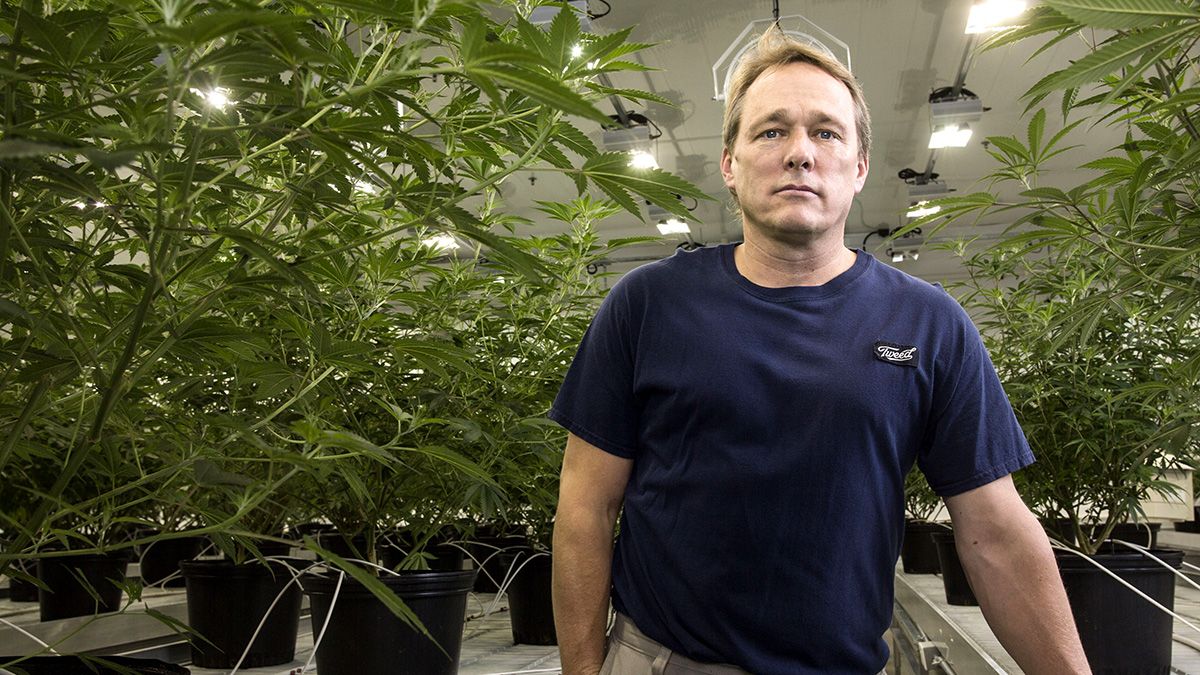Canopy Growth Corporation (CGC) has announced its earnings for the second quarter, making revenues of $17.85m, some 30% off the Zacks estimate.
This is the fourth quarter the company has failed to match revenue estimates. It made a quarterly loss of $0.76 per share, up on the $0.01 per share loss from this quarter one year ago. Last year Canopy made $14.02m in revenue.
Not only was its Q2 revenue lower than expected, it also posted its biggest loss in the company's history.
| Performance YTD | 48.8% |
| Market cap | $11.9bn |
| EPS (TTM) | -0.76 |
Canopy Growth stock vitals, Yahoo finance, as at 19 November 2018
The company sold 2,197kg of product, up 9% on a year ago, while its average selling price of $9.87 represented a 24% increase.
According to Canopy's co-chief executive Bruce Linton, the decrease in revenue followed issues relating to medical cannabis shipping to Germany, and the legalisation of recreational use in Canada on 17 October distracting its medical patient base..
"It is the first time in our history that I'm aware of that we actually had a slowdown, but it was more of a distraction than a pattern," Linton told analysts on a conference call Wednesday.
Canopy Growth Corporation shares have increased just under 50% since the beginning of the year, a far stronger gain than the S&P 500. But the stock has performed less well in the run up to and immediately following its earnings release, much in line with rivals Tilray and Cronos Group, who also announced their financials this week. Thursday did however bring a slight bump for stocks in the sector.

Canopy Growth share price performance, NASDAQ interactive chart, as at 19 November 2018
Increased expenditure
As with all of the other Canadian cannabis companies, Canopy is spending an inordinate amount on marketing and increasing production to fully capitalise on the legalisation of recreational cannabis in Canada.
Operating expenses rose to $180.6m during Q2, nearly six times the $27.7m it spent in the same period in 2017. For Canopy, as with its competitors, Q2 didn’t include the recreational sales in Canada, but the ramped up production and marketing was accounted for, skewing the numbers heavily.
Canopy spent $39m on sales and marketing in October, up significantly from $7.6m year-on-year. It reported a total net loss of $330.6m. Yet it expects these expenses to lessen amid tighter government regulations on cannabis promotion post-legalisation.
The bigger picture
Explaining the company’s expenditure and attendant long-term vision, Bruce Linton told investors: “With extensive investments over the past year, including most notably in the second quarter in branding and retail development, our entrance into the retail cannabis market has been a success with our SKU assortment obtaining over 30% listings market share in multi-store physical retail store networks nationwide.
“With substantial product inventories on hand, new product formats coming to market as planned, a captive sales force driving increased demand through physical retail stores and increasing internal and channel efficiencies, we believe based on market conditions today that we will attain significant and sustainable market share of the Canadian recreational market.”
As for the stocks, the current consensus EPS estimate is -$0.06 on $73.90m in revenues for the coming quarter and -$0.41 on $218.90m in revenues for the fiscal year.
Canopy is the furthest of any of the big cannabis companies from breaking even; Aphria has the most cost-effective production and is likely to make a profit in 2019, and Tilray has the smallest net loss among the big three (Tilray, Canopy and Aurora) with $18.7m.
Market opportunity
Research from Grand View shows the global cannabis market will be worth $146bn by 2025. There’s money to be made, and yet none of the companies associated with its recreational rollout in Canada have been able to prove profitability. However, with a fluid landscape as more countries introduce legal medicinal cannabis, and flirt with recreational frameworks, Canopy, as one of the biggest companies and first to go public, is in a strong position to capitalise.
$146bn
Estimated value of the global cannabis market by 2025
Currently with a market weight of 7.98 in ETF, third behind Tilray and Cronos, investors should watch the developments in countries like the UK and Germany, which are introducing medical cannabis markets. Due to its scope, Canopy would also be well placed to capitalise on federal law changes in the US, made slightly more likely by the Democrats’ midterm election gains in Congress. However, its ability to profit relies entirely on production capacity, and Canopy is projected to have the biggest of the lot, with 300,000kg of production expected by 2019.
Continue reading for FREE
- Includes free newsletter updates, unsubscribe anytime. Privacy policy





